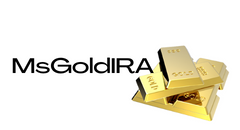The U.S. Securities and Exchange Commission (SEC), a prominent regulatory body, recently unveiled its meticulous examination priorities for 2024. The focus this year will be on the fast-paced crypto domain, with the aim to monitor and conduct comprehensive examinations.
SEC's Stance on Crypto Monitoring
The SEC publicized its intentions to emphasize crypto monitoring and examinations in 2024. The regulator aims to scrutinize the offer, sale, recommendation, advice, trading, and other activities pertaining to crypto assets or associated products.
Division of Examinations and 2024 Priorities
The SEC's Division of Examinations has announced its examination priorities for 2024. The main thrust of these priorities is to inform investors and registrants about the primary risks, examination topics, and priorities earmarked for the forthcoming year. The regulator further clarified that this year's examinations would prioritize areas presenting emerging risks to investors or the markets, in addition to core and perennial risk areas.
Crypto Asset Market Volatility
The SEC acknowledged the ongoing volatility and activity in the crypto asset markets. Consequently, the division will persist in its monitoring efforts and, when deemed necessary, will carry out examinations of registrants. The regulator will concentrate on various activities in crypto assets, including the offer, sale, recommendation, advice, trading, and other related activities.
Compliance Standards for Crypto Assets
The SEC stated that it would assess whether registrants associated with crypto assets adhere to their respective standards of conduct while recommending or advising customers and clients about crypto assets.
Compliance Practices and Operational Resiliency
Furthermore, the SEC intends to ascertain that registrants regularly review, update, and enhance their compliance practices, risk disclosures, and operational resiliency practices. These compliance practices encompass crypto wallet reviews, custody practices, compliance reviews under the Bank Secrecy Act (BSA), and valuation procedures. Operational resiliency practices include measures to ensure data integrity and business continuity plans.
Custody Requirements for Crypto Assets
The SEC will also evaluate whether advisers comply with the custody requirements under the Advisers Act (Rule 206(4)-2) concerning crypto assets classified as funds or securities.
Allocation of Resources and Examination Issues
The Division of Examinations plans to allocate substantial resources to the examination issues. Simultaneously, it will conduct examinations targeting new or emerging risks, products, services, market events, and investor concerns.
The SEC's decision to prioritize crypto monitoring and examinations underscores the importance and relevance of the crypto domain in today's financial landscape.
Frequently Asked Questions
Who owns the gold in a Gold IRA?
The IRS considers an individual who owns gold as holding “a form of money” subject to taxation.
This tax-free status is only available to those who have owned at least $10,000 of gold and have kept it for at minimum five years.
While gold may be a great investment to help prevent inflation and volatility in the market, it's not wise to keep it if you won't use it.
You will need to declare the value of gold if you intend on selling it one day. This could impact how capital gains taxes you owe for cash investments.
A financial planner or accountant should be consulted to discuss your options.
How much gold can you keep in your portfolio
The amount of capital that you require will determine how much money you can make. You can start small by investing $5k-10k. As you grow, it is possible to rent desks or office space. So you don't have all the hassle of paying rent. Only one month's rent is required.
It is also important to decide what kind of business you want to run. My company is a website creator. We charge our clients about $1000-2000 per monthly depending on what they order. If you are doing this type of thing, it is important to think about how much you can expect from each client.
You won't get a monthly paycheck if you work freelance. This is because freelancers are paid. This means that you may only be paid once every six months.
Before you can determine how much gold you'll need, you must decide what type of income you want.
I recommend starting with $1k-$2k in gold and working my way up.
What are the pros and disadvantages of a gold IRA
The main advantage of an Individual Retirement Account (IRA) over a regular savings account is that you don't have to pay taxes on any interest earned. This makes an IRA a great choice for people who are looking to save money but don’t want to pay any tax on the interest earned. This type of investment has its downsides.
For example, if you withdraw too much from your IRA once, you could lose all your accumulated funds. You may also be prohibited by the IRS from making withdrawals from an IRA after you turn 59 1/2. If you do withdraw funds, you'll need to pay a penalty.
Another disadvantage is that you must pay fees to manage your IRA. Many banks charge between 0.5%-2.0% per year. Other providers may charge monthly management fees, ranging between $10 and $50.
If you prefer your money to be kept out of a bank, then you will need insurance. Insurance companies will usually require that you have at least $500,000. You may be required by some insurers to purchase insurance that covers losses as high as $500,000.
If you choose to have a gold IRA you will need to establish how much gold to use. Some providers limit the number of ounces of gold that you can own. Others let you choose your weight.
You'll also need to decide whether to buy physical gold or futures contracts. The price of physical gold is higher than that of gold futures. Futures contracts, however, allow for greater flexibility in buying gold. Futures contracts allow you to create a contract with a specified expiration date.
Also, you will need to decide on the type of insurance coverage you would like. The standard policy doesn't include theft protection or loss due to fire, flood, or earthquake. It does provide coverage for damage from natural disasters, however. You might consider purchasing additional coverage if your area is at high risk.
You should also consider the cost of storage for your gold. Insurance won't cover storage costs. In addition, most banks charge around $25-$40 per month for safekeeping.
You must first contact a qualified custodian before you open a gold IRA. A custodian helps you keep track of your investments, and ensures compliance with federal regulations. Custodians can't sell assets. Instead, they must keep your assets for as long you request.
After you've determined which type of IRA is best for you, fill out the paperwork indicating your goals. Information about your investments such as stocks and bonds, mutual fund, or real property should be included in your plan. You should also specify how much you want to invest each month.
You will need to fill out the forms and send them to your chosen provider together with a check for small deposits. After receiving your application, the company will review it and mail you a confirmation letter.
Consider consulting a financial advisor when opening a golden IRA. Financial planners have extensive knowledge in investing and can help determine the best type of IRA to suit your needs. They can help you find cheaper insurance options to lower your costs.
What is the best precious metal to invest in?
Answering this question will depend on your willingness to take some risk and the return you seek. Gold is a traditional haven investment. However, it is not always the most profitable. Gold may not be right for you if you want quick profits. If you have time and patience, you should consider investing in silver instead.
If you don’t desire to become rich quickly, gold may be your best option. If you are looking for a long-term investment that will provide steady returns, silver may be a better choice.
How much money should I put into my Roth IRA?
Roth IRAs can be used to save taxes on your retirement funds. These accounts cannot be withdrawn until you turn 59 1/2. You must adhere to certain rules if you are going to withdraw any of your contributions prior. First, you cannot touch your principal (the original amount deposited). This means that you can't take out more money than you originally contributed. If you decide to withdraw more money than what you contributed initially, you will need to pay taxes.
The second rule is that your earnings cannot be withheld without income tax. So, when you withdraw, you'll pay taxes on those earnings. Let's take, for example, $5,000 in annual Roth IRA contributions. Let's also say that you earn $10,000 per annum after contributing. This would mean that you would have to pay $3,500 in federal income tax. That leaves you with only $6,500 left. Since you're limited to taking out only what you initially contributed, that's all you could take out.
If you took $4,000 from your earnings, you would still owe taxes for the $1,500 remaining. In addition, 50% of your earnings will be subject to tax again (half of 40%). So even though you received $7,000 in Roth IRA contributions, you only received $4,000.
There are two types if Roth IRAs: Roth and Traditional. A traditional IRA allows you to deduct pre-tax contributions from your taxable income. When you retire, you can use your traditional IRA to withdraw your contribution balance plus interest. There are no restrictions on the amount you can withdraw from a Traditional IRA.
Roth IRAs are not allowed to allow you deductions for contributions. But once you've retired, you can withdraw the entire contribution amount plus any accrued interest. There is no minimum withdrawal required, unlike a traditional IRA. You don't need to wait until your 70 1/2 year old age before you can withdraw your contribution.
What proportion of your portfolio should you have in precious metals
This question can only be answered if we first know what precious metals are. Precious elements are those elements which have a high price relative to other commodities. This makes them very valuable in terms of trading and investment. Gold is currently the most widely traded precious metal.
There are many other precious metals, such as silver and platinum. The price of gold tends to fluctuate but generally stays at a reasonably stable level during periods of economic turmoil. It is also relatively unaffected both by inflation and deflation.
In general, prices for precious metals tend increase with the overall marketplace. That said, they do not always move in lockstep with each other. If the economy is struggling, the gold price tends to rise, while the prices for other precious metals tends to fall. Investors expect lower interest rate, making bonds less appealing investments.
However, when an economy is strong, the reverse effect occurs. Investors prefer safe assets such as Treasury Bonds and demand fewer precious metals. Because they are rare, they become more pricey and lose value.
Therefore, to maximize profits from investing in precious metals, you must diversify across multiple precious metals. Additionally, since the prices of precious metals tend to rise and fall together, it's best to invest in several different types of precious metals rather than just focusing on one type.
How much should your IRA include precious metals
You should remember that precious metals are not only for the wealthy. They don't require you to be wealthy to invest in them. There are many ways to make money on silver and gold investments without spending too much.
You might also be interested in buying physical coins, such bullion rounds or bars. You could also buy shares in companies that produce precious metals. You may also be interested in an IRA transfer program offered by your retirement provider.
You can still get benefits from precious metals regardless of what choice you make. Even though they aren't stocks, they still offer the possibility of long-term growth.
Their prices are more volatile than traditional investments. So, if you decide to sell your investment down the road, you'll likely see more profit than you would with traditional investments.
Statistics
- If you accidentally make an improper transaction, the IRS will disallow it and count it as a withdrawal, so you would owe income tax on the item's value and, if you are younger than 59 ½, an additional 10% early withdrawal penalty. (forbes.com)
- If you take distributions before hitting 59.5, you'll owe a 10% penalty on the amount withdrawn. (lendedu.com)
- Indeed, several financial advisers interviewed for this article suggest you invest 5 to 15 percent of your portfolio in gold, just in case. (aarp.org)
- You can only purchase gold bars at least 99.5% purity. (forbes.com)
- Instead, the economy improved, stocks rebounded, and gold plunged, losing 28 percent of its value in 2013. (aarp.org)














